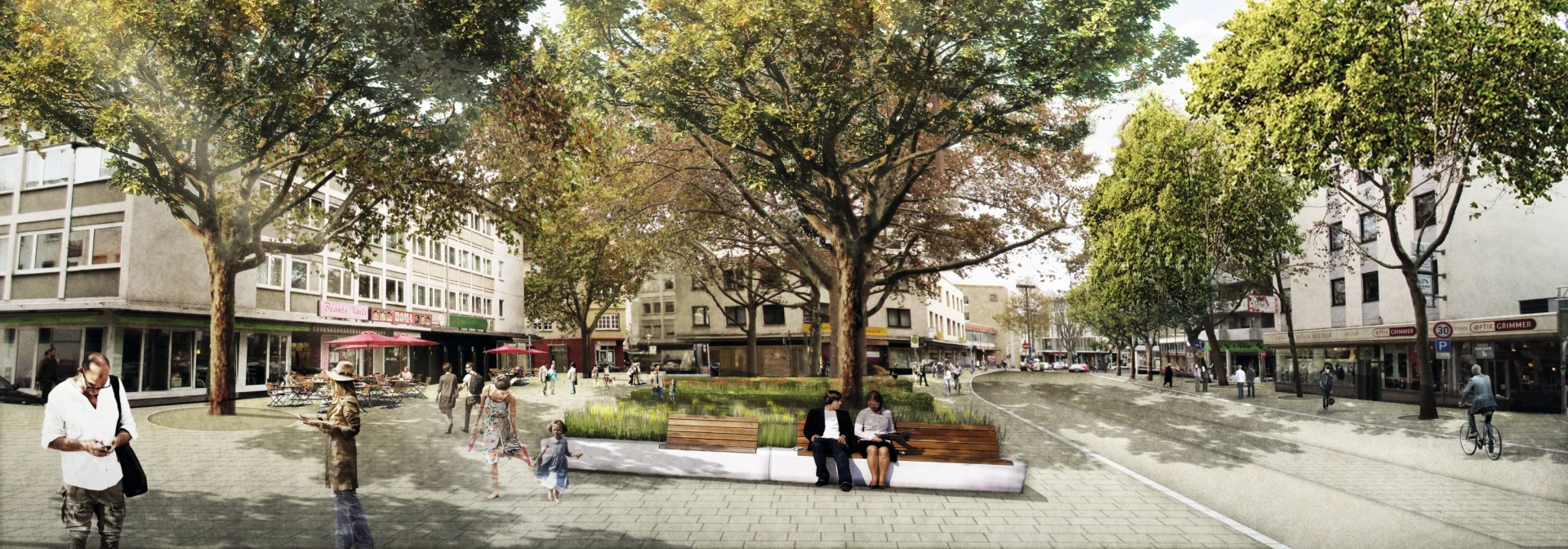

The topic of sponge cities is currently omnipresent, and concepts for a climate-resilient redesign of our cities are overdue in view of prolonged dry periods and intensive heavy rainfall. [1] In addition to measures such as green roofs, retention roofs, green facades, retention reservoirs, rainwater harvesting systems and infiltration systems, there is great potential in the unsealing of traffic areas, which can account for up to 17% of the total area in cities in NRW, for example [2], and almost 40% in city centers. Permeable paving slabs offer the opportunity to pave surfaces without sealing them and thus improve the water balance by allowing some of the rainwater to seep back into the groundwater. The preservation of the natural water balance is a central requirement of the applicable regulations [3]. Water-permeable surface coverings have been around since the 1990s - they have been continuously developed further. Today, it is possible to regenerate the infiltration capacity and current new developments, such as the GDM.KLIMASTEIN, increase evaporation in the urban environment and thus actively cool urban centers.
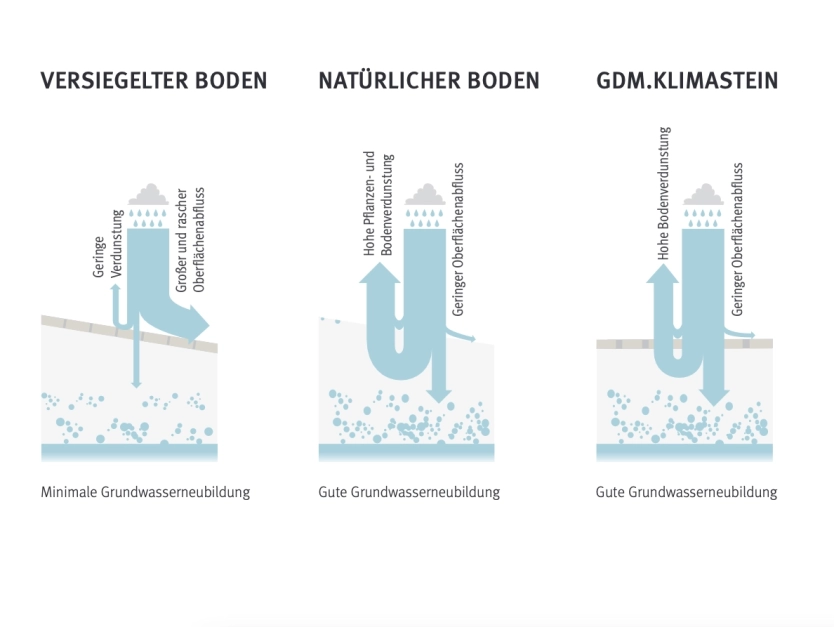
Why the acceptance of these surfaces is not growing even faster could also be due to the regulations. This is where the requirements of road construction with the regulations of the German Road and Transportation Research Association (FGSV) meet the requirements of water management, especially those of the German Association for Water, Wastewater and Waste (DWA).
Time to analyze the regulations and evaluate the similarities as well as conflicting requirements.
On the FGSV side, the code of practice for infiltration-capable traffic areas (MVV) [5] published in 2013 applies to the construction method. The leaflet refers to the Guidelines for the Construction of Roads - Drainage (RAS-Ew) [6], i.e. currently the Guidelines for the Drainage of Roads (REwS) [7], but strictly speaking these apply outside of residential areas. In addition to the basics such as precipitation and infiltration, filter stability and water management aspects, the MVV contains specifications for planning and design, structure and dimensioning, building materials, requirements and tests for infiltration-capable paving surfaces.
On the DWA side, worksheet 138 "Planning, construction and operation of systems for the infiltration of precipitation water" [8] applies to infiltration, which is currently available in yellow print as DWA-A 1381 "Systems for the infiltration of precipitation water - Part 1: Planning, construction, operation" [9]. As long as this has not yet been finally adopted, DWA-M 153 "Recommendations for handling rainwater" [10] also applies. In the event of discharge into surface waters, DWA-A 102-2/BWK-A 3-2 - "Principles for the management and treatment of stormwater runoff for discharge into surface waters - Part 2: Emission-related assessments and regulations" [11] applies. Strictly speaking, however, DWA-A 138-1 does not apply to water-permeable surface coverings on which only the directly occurring rainwater is infiltrated. It states: "This worksheet refers to the infiltration of precipitation water in the sense of the definition of wastewater according to § 54 WHG [12], i.e. water that runs off collectively from precipitation from the area of paved or built-up areas" [9]. With a water-permeable surface covering, the water is not collected and does not run off, but seeps away diffusely over the entire surface. However, this should not be a free pass for the infiltration of all traffic area runoff via water-permeable coverings, as rainwater runoff from traffic areas has a high pollutant potential [9, 11] and therefore infiltration should only be possible with prior treatment in order not to endanger the groundwater as a protected resource. Infiltration without treatment of traffic area runoff is therefore contrary to the prohibition of deterioration in the European Water Framework Directive (WFD). In this respect, from the point of view of groundwater protection, the water quality requirements in accordance with DWA-A 138-1 must be taken into account. The discharge into a surface water body via formation drains is more clearly regulated, as the water drains off collectively here. This also does not apply if water is also discharged onto the paved surface, e.g. from adjacent roof areas. However, this is not unproblematic due to the higher water and material loads and is not provided for, for example, in the general building inspectorate approvals (aBG) of the German Institute for Building Technology (DIBt) for infiltration-capable surface coverings.
Thematically, the abG also belong in the area of regulations. These are reliable proofs of usability of construction products or proofs of applicability of construction types with regard to structural requirements for buildings and are now included in many sets of rules. A surface covering with abG is tested by an independent laboratory for its infiltration capacity, its pollutant retention and the regenerability of the infiltration performance.
For precipitation, the MVV assumes an average value for 15-minute rainfall of 120 l/(s-ha) at n=1 (i.e. an event that statistically occurs once a year) for the drainage requirements. The MVV also refers to DWA-A 138 and a 10-minute rainfall with n = 0.2, which corresponds to a rainfall of 270 l/(s-ha) when applying the time weighting method. This results in a minimum infiltration value ki (design-relevant infiltration rate (generally water-saturated conditions)) of the superstructure of 2.7 - 10-5 m/s. This approach is outdated. Infiltration systems are designed using the regional rainfall data from the KOSTRA Atlas [13], which is available free of charge on the Internet. In view of changing rainfall intensities, the question should be asked to what extent n = 0.2 is still appropriate, or whether it would be better to use n = 0.1 for precautionary reasons. However, the 270 l/(s-ha) is also the rainfall rate that is permanently required by the DIBt's general building inspectorate approvals. According to KOSTRA, higher rainfall intensities than 270 l/(s-ha) are achieved regionally in individual cases. However, the abG and the MVV contain safety factors. For example, to determine the infiltration value ki, the permeability coefficient kf (permeability coefficient or hydraulic conductivity of a water-saturated soil) is set at 50 % as in the still valid A 138. In practice, however, this is generally unproblematic, as will be explained later.
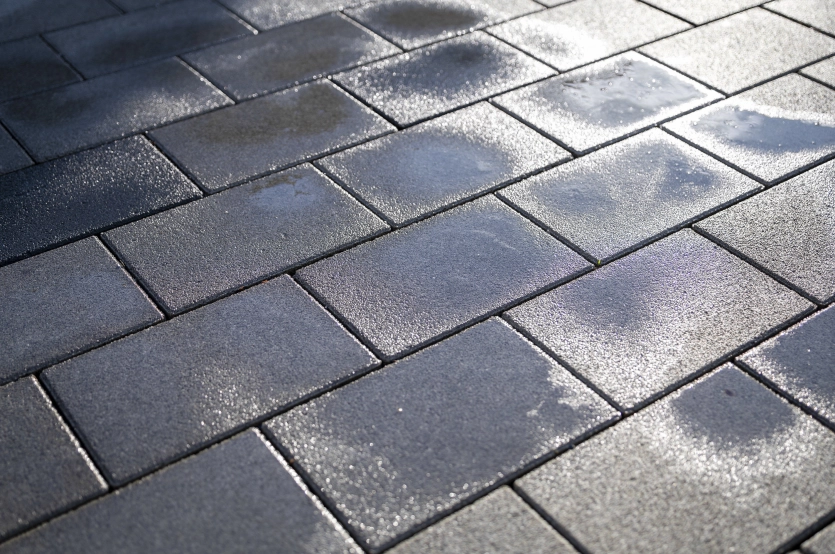
With regard to water management aspects, the MVV states that the construction of infiltration-capable traffic areas in water protection areas must be ruled out in accordance with the "Guidelines for construction measures on roads in water protection areas" (RiStWaG) [14]. Strictly speaking, however, the RiStWaG apply outside of residential areas, and this is an important aspect to consider. In the case of water-permeable surface coverings with abG, the legal requirements of soil and water protection are fulfilled, meaning that the leachate is to be assessed qualitatively in a similar way to water after a topsoil passage. Depending on the water protection area ordinance, such purified precipitation water can be infiltrated in protection zones III A and III B after consultation with the responsible water authority. From a water management perspective, this requirement of the MVV is therefore not always valid across the board and should be examined on a case-by-case basis.
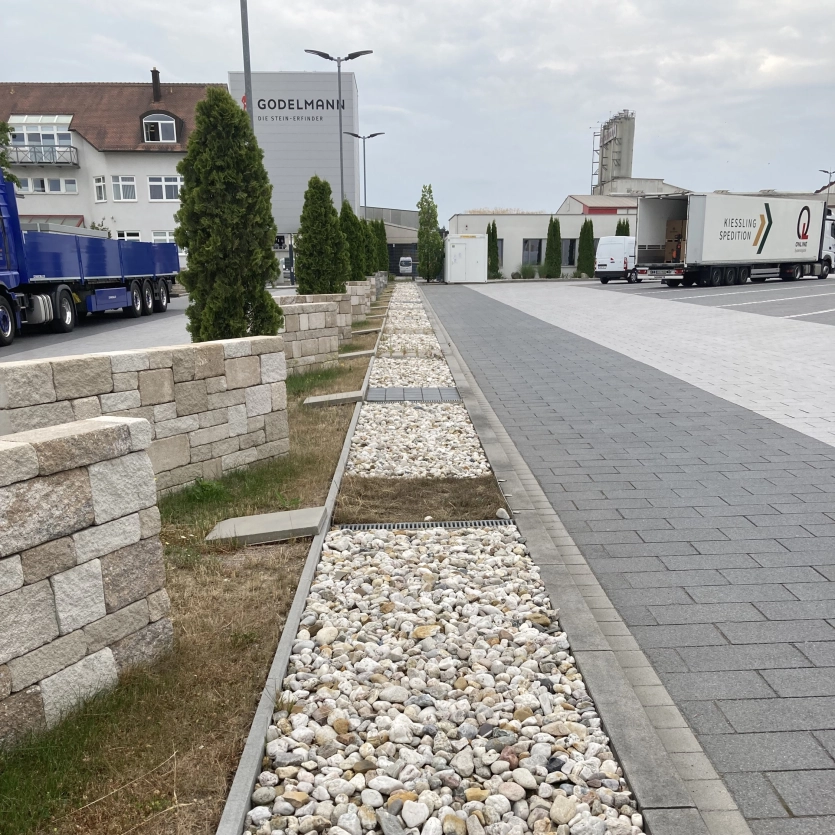
Even with water-permeable surface coverings, surface runoff usually occurs occasionally during heavy rainfall after several years of use. With regard to drainage measures, the MVV states that surface drainage is dimensioned in accordance with the RAS-Ew. Strictly speaking, however, as already mentioned, these apply outside of residential areas. When it comes to surface runoff, the runoff coefficient of the area is decisive. As the surface coverings colmate over time, e.g. due to tire abrasion or organic solids, a runoff coefficient C of 0.3 to 0.5 is specified in the MVV. DWA-A 138-1 distinguishes between two different runoff coefficients, the peak runoff coefficient Cs and the mean runoff coefficient Cm. The peak runoff coefficient Cs is decisive for the dimensioning of surface runoff during heavy rainfall. Depending on the type of water-permeable surface, DWA-A 138-1 specifies different runoff coefficients (see Table 1).
Pavements also occupy a special position here, as they have a permanent minimum permeability of 270 l/(s-ha) and this can and must be demonstrably restored. This means that the average runoff coefficient is Cm < 0.1, but the peak runoff coefficient can certainly rise to around 0.4 in extreme cases. Whether this should be used in drainage planning depends largely on the design of the surface. The aim should be to keep all rainwater on the surface, as explained in the next chapter.
Contrary to the requirements of the REwS, the slope of water-permeable traffic areas only has to be 1% according to the MVV, which can be an advantage when planning large areas.
Table 1: Selected runoff coefficients according to DWA-A 138-1 [9]
| Type of surfaces or their paving | Peak runoff coefficient Cs | Average runoff coefficient Cm |
| Paved surfaces with joints > 15 % | 0,7 | 0,60 |
| Interlocking paving stones with seepage joints, seepage/drainage stones | 0,4 | 0,25 |
| Grass pavers (with frequent traffic loads, e.g. parking lot) | 0,4 | 0,20 |
| Grass pavers (without frequent traffic loads, e.g. fire department access road) |
According to the MVV, rainwater running off the surface should preferably be discharged into an infiltration system. When planning, it is also advisable to consider temporary storage on the surface, especially if there are insufficient green spaces available. DIN 1986-100 [15] and DWA-A 138-1 [9] require the implementation of a flooding verification for inner-city properties with a design area ABem (calculated value for the design, which results from the sum of all partial areas connected to the infiltration system, multiplied by the corresponding average runoff coefficient) > 800m2. This can be carried out directly with the water-permeable traffic area. In this case, planning must ensure that a certain volume of water, which corresponds to the difference between the thirty-year or hundred-year rainfall event and the minimum infiltration rate of 270 l/(s-ha), remains on the property, i.e. in this case on the surface, without causing any damage and without running off. This can be ensured, for example, by a negative roof slope or suitable raised kerbs. The excess rainwater then seeps away in the minutes following the rainfall event (Figure 3); at this location in the Netherlands, a temporary accumulation was deliberately accepted, as the surface structure of the pavement does not have a sufficient infiltration rate for heavy rainfall. Additional water can even be absorbed from adjacent surfaces such as roofs, so that the sewer and the receiving watercourse are not burdened. In this case, both the peak runoff coefficient Cs and the average runoff coefficient Cm can be set at 0.0, as no water can run off the surface.
Both the MVV and DWA-A 138-1 contain hydraulic requirements for the subsoil. According to the MVV, the subsoil must have a minimum kf value of > 5 - 10-5 m/s or a ki value > 3-10-5 m/s, and the permeable layer should have a minimum thickness of one meter. If the permeability is lower, construction measures must be taken, e.g. raising the frost protection layer or arranging subgrade seepage layers with drainage in accordance with RAS-Ew with discharge into a receiving watercourse or rainwater channel. The A 138 defines the kf value range in which infiltration systems should be used between 1 - 10-3 m/s and 1 - 10-6 m/s. Alternatively, the local rainfall values from the KOSTRA atlas can be used for the minimum infiltration rate in accordance with the MVV. "The thickness of the seepage space should always be at least 1 m in relation to the mean highest groundwater level (MHGW). In exceptional cases, the seepage space can also be less than 1 m, but at least 0.5 m, if the precipitation runoff has a low material load" [9]. DWA-A 138-1 refers to the distance between the lower edge of the infiltration system and the MHGW, which would be the subgrade for paved surfaces. The MVV assumes a minimum distance of 2.0 m from the upper edge of the paved surface to the MHGW and a minimum distance of 1.0 m from the upper edge of the substructure/subsoil. According to the abG, the groundwater table distance between the upper edge of the paved surface and the MHGW must be at least 1.0 m.
The yellow print of A 138-1 contains a new chapter on the implementation and evaluation of methods for determining water permeability. These methods can also be used to determine the permeability of the soil and the base and frost protection layer for water-permeable surface coverings. Preference should always be given to in-situ methods with the largest possible measuring areas, such as a double-ring infiltrometer measurement. The methods are only suitable for testing the specific infiltration rate of paved surfaces to a limited extent. All methods work with a certain amount of overflow. This also makes sense for infiltration systems with a storage function (swales, infiltration trenches), but in practice, a minimal build-up of water in permeable pavements means that surface runoff occurs. Therefore, measurements should be taken with the lowest possible hydrostatic pressure, as otherwise the infiltration rates will be overestimated. The MVV recommends the double-ring infiltrometer and the drip infiltrometer method, in which rain is simulated and the accumulation on the surface is kept very low. In addition, a quick test is described using a 300 mm brass ring that is sealed against the substrate with a gypsum slurry, for example. The first method provides the most accurate results, with the quick test it should be noted that water from the ring can also seep laterally into the substrate. An evaluation of the test results is described.
According to the yellow print of DWA-A 138-1, the infiltration rate kifor the design is calculated as the product of the determined permeability coefficient (preferably from a field test) and a correction factor. In the simple method, the infiltration rate is assumed to be constant for the sake of simplicity; in reality, it changes over the course of the rainfall event. Local influences such as soil structure, soil compaction and macropores lead to large bandwidths in the permeability coefficients. Therefore, the correction factor is made up of a local correction factor (between 0.1 and 1.0 depending on the level of knowledge of the local conditions) and a correction factor for the determination method, which is between 0.1 for laboratory methods with disturbed samples or grading curve evaluations and 1.0 for large-scale field tests in test pits/trial pits (≥ 1 m2). Double ring infiltrometer measurements and drip infiltrometer measurements can be set at 0.9 and are therefore considered very accurate.
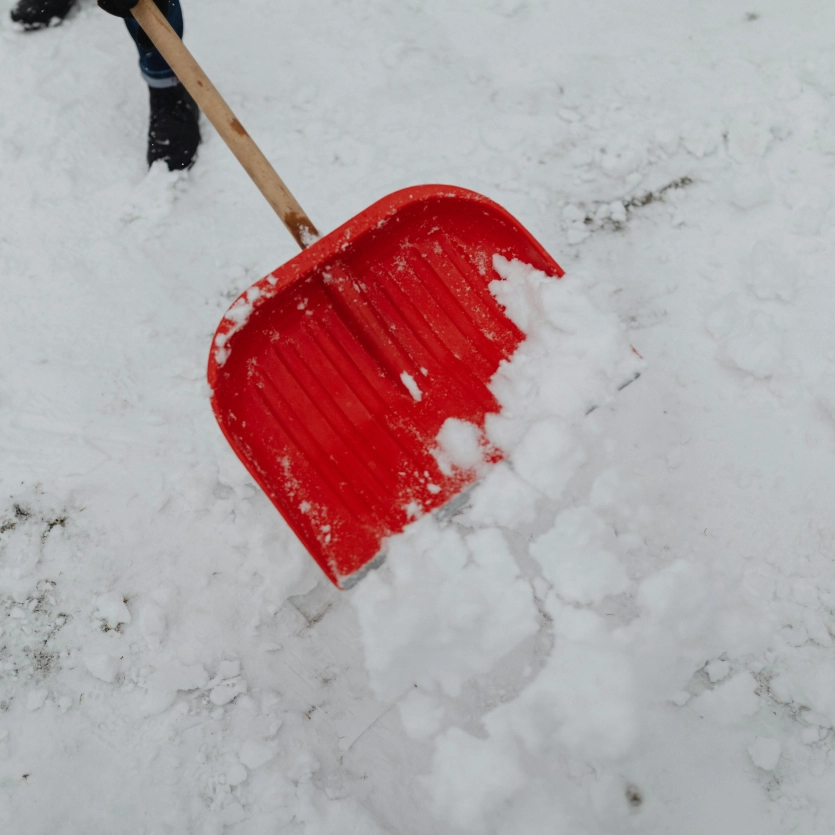
Operational instructions are only given in the MVV, as DWA-A 138-1 does not explicitly consider infiltration via water-permeable coverings. From a water management point of view, the use of de-icing salts in winter road maintenance should be mentioned here in particular, as these impair the quality of the aquifer. According to the MVV, the "Code of practice for winter road maintenance" and the TL-Streu guidelines should be observed. De-icing agents should therefore not be used on traffic areas with permeable paving. In the case of paved surfaces with a dense structure, grit 2/5 mm should be used, for example.
It should be added here that there are alternatives to the common de-icing agents based on NaCl, MgCl or CaCl that are neither corrosive for concrete nor critical for groundwater. Commercial airports, for example, use organic salts to de-ice their runways. These do not cause corrosion and are also effective at low temperatures. They have a much lower impact on the soil and groundwater than conventional road salt and are therefore an alternative if salts have to be used [16].
DWA-A 138 stipulates that chloride from winter road maintenance cannot be retained in any treatment plant; the concentration can only be reduced by dilution in the groundwater. There is no direct specification for winter road maintenance.
Do the regulations of the FGSV and the DWA contradict each other in the case of water-permeable surface coverings made of concrete blocks? Not in principle. The requirements for the drainage or infiltration of rainwater via water-permeable paved surfaces are primarily regulated by the MVV from a road construction perspective and by DWA-A 138-1 from a water management perspective. These regulations differ slightly in some specifications. The main reason for this is the different publication dates of the regulations and the level of scientific knowledge at the time they were drawn up. In addition, there are regulations from the general building inspectorate approvals of the DIBt, which are already included in the current DWA regulations. The design approaches contain, for example, safety factors that ensure the application of the coverings in practice. Any deviations in the requirements for rainwater retention, permeability, groundwater table spacing, etc. are acceptable.
In principle, the objectives of the regulations are the same, even if the MVV focuses on construction technology and the DWA regulations on water management issues. When the MVV is updated, it should be harmonized with the current DWA regulations to eliminate any ambiguities. However, both aspects can easily be taken into account when planning water-permeable coverings.
There is no doubt that water-permeable surfaces should be used to a greater extent in the context of blue-green urban development, also known as the sponge city principle, as increasing sealing in the context of more frequent heavy rainfall events must be viewed critically. Blue-green should be combined with an ecologically correct gray so that traffic areas also make their contribution to the water management transformation of urban spaces.

[1] Neunteufel, B., König, A., Muschalla, D. (2023): Decentralized stormwater management - Terms, definitions and regulations - Austrian Water and Waste Management September 2023, https://doi.org/10.1007/s00506-023-00990-w
[2] State Office IT.NRW (2024): Sieben Prozent der NRW-Landesfläche sind Flächen für Verkehr.- [online] https://www.it.nrw/sieben-prozent-der-nrw-landes flaeche-sind-flaechen-fuer-verkehr-18075, retrieved on 20.07.2024
[3] DWA (2022): Code of practice DWA-M 102-4/BWK-M 3-4 - Principles for the management and treatment of stormwater runoff for discharge to surface waters - Part 4: Water balance for the management of stormwater - March 2022 - German Association for Water, Wastewater and Waste (DWA), Hennef
[4] Dierkes, C. Lucke, T., Hulsman, H., Vergroesen, T. (2016): Permeable pavements as effective method to restore the urban water balance - Conference Paper, 4th IAHR Europe Congress, July 27-29, Liege, Belgium
[5] FGSV (2013): MVV: Code of practice for permeable pavements. - Research Association for Roads and Transportation, Cologne
[6] FGSV (2005): RAS-Ew: Guidelines for the construction of roads - Part: Drainage - Road and Transportation Research Association, Cologne.
[7] FGSV (2022): Guidelines for the drainage of roads.- Research Association for Roads and Transportation, Cologne
[8] DWA (2005): DWA-A 138 - Planning, construction and operation of systems for the infiltration of rainwater - German Association for Water, Wastewater and Waste (DWA), Hennef
[9] DWA (2020): DWA-A 138-1 - Stormwater infiltration systems - Part 1: Design, construction, operation - Draft November 2020 - German Association for Water, Wastewater and Waste (DWA), Hennef
[10] DWA (2007): DWA-M 153, Recommendations for the handling of rainwater, August 2007 - German Association for Water, Wastewater and Waste (DWA), Hennef
[11] DWA (2020): DWA-A 102-2/BWK-A 3-2 - Principles for the management and treatment of stormwater runoff for discharge to surface waters - Part 2: Emission-related assessments and regulations - December 2020 - German Association for Water, Wastewater and Waste (DWA), Hennef
[12] WHG (2009): Water Resources Management Act of July 31, 2009 (Federal Law Gazette I page 2585), last amended by Article 1 of the Act of June 19, 2020 (Federal Law Gazette I page 1408)
[13] KOSTRA-DWD-2020 (2020): Heavy precipitation heights for Germany. German Weather Service, Offenbach; available e.g. via www.openko.de
[14] GSV (2016): RiStWag: Guidelines for construction measures on roads in water catchment areas - Road and Transportation Research Association, Cologne
[15] DIN 1986-100 (2016): Drainage systems for buildings and land - Part 100: Provisions in conjunction with DIN EN 752 and DIN EN 12056, Edition 2016-12, Deutsches Institut für Normung e.V., Berlin
[16] Deml, K. (2012): From the runway to the neighborhood street - kommunalmagazin.ch, No. 4 August/September 2012